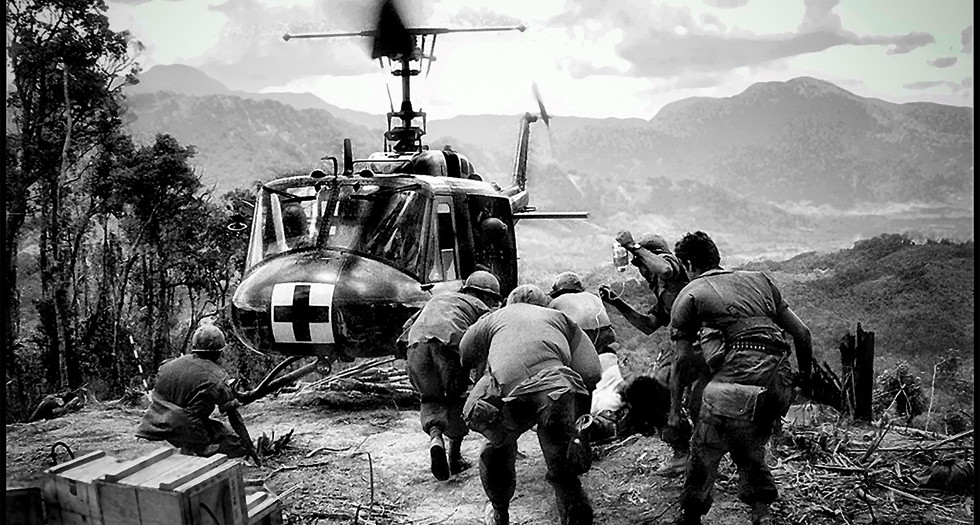
Helicopter pilot, Medal of Honor recipient reflects on “the greatest advance in combat medicine.”
Military medicine has had a profound influence on medical innovation, from Hippocrates, the father of modern medicine, to Florence Nightingale, the mother of nursing. Both developed their skills in combat, as have others -- including U.S. Army Maj. Charles Kelly, who pioneered aeromedical evacuation during the Vietnam War. One caring individual alone can inspire monumental improvements.
Early on, the Roman armies recognized that caring for the wounded was not only compassionate but a combat multiplier. Men fought better when they knew they would be cared for. But casualties were a drain on readiness -- not just the loss of the wounded, but those who cared for them. Accordingly, the Romans developed a system of echeloned medical care in an evacuation chain that is used to this day. The purpose was to conserve fighting strength by treating and returning to duty those so disposed and clearing the battlefield of the others.
Time, the golden hour, was life or death, and it was clear that the evacuation system was the cornerstone of effective and efficient medical care -- indeed, military readiness.
Medical evacuation, or medevac, began on the backs of soldiers. It progressed to horses, then horse-drawn “flying ambulances” developed by Dominique Larrey, Napoleon’s surgeon. Larrey, who once performed 200 amputations in a 24-hour period, also developed a system of triage designed to conserve fighting strength by sorting casualties by wound gravity and evacuating only as far as necessary. Finally, he organized field hospitals, the forerunner of today’s mobile army surgical hospitals (MASH).
Medevac further evolved through our nation’s wars. World War I and World War II saw motorized ambulances. Helicopters were used in World War II but with minimum effect on casualty survival. They were more effective in the Korean War but remained pretty much in the echeloned evacuation system, limited by the machines available.
The ultimate successor to Larrey’s flying ambulance was the magnificent UH-1 “Huey” and “Dustoff,” designed, developed and saved by Kelly, who is rightly considered the father of modern combat evacuation and gave his life to save this incredible resource. Under Kelly, medevac became Dustoff, perhaps the most effective and efficient battlefield operating system ever. The slowness of echeloned evacuation and triage was replaced by direct, lightning-fast transport of wounded from battlefield to appropriate medical care day and night in all manner of weather. Kelly’s dying words, “When I have your wounded,” inspired Dustoff, the greatest advance in combat medicine, producing unprecedented survival rates.
Additionally, because Dustoff crews carried civilians, women and children -- and even enemy personnel -- it had a positive effect on the battle for hearts and minds vital in guerrilla warfare.
Vietnam War Dustoff crews are credited with evacuating more than 900,000 people from 1962 to 1973.
In 2015, I discovered that no unit from Vietnam had been awarded a Congressional Gold Medal, the only such war in our history. I brought this to the attention of Sen. John Cornyn, R-Texas, and he asked me to help his office write a bill that would recognize the Dustoff crews of Vietnam, collectively, for their heroism and life-saving service. My goal was to honor Kelly, the crews he inspired, and the Gold Star Families of those crews who died that others might live.
Later that year, on Veterans Day, Cornyn visited Fort Sam Houston -- the home of Dustoff -- to announce he’d introduced a bill to recognize the pilots, crew chiefs and medics who “served honorably in the Vietnam War aboard a helicopter ambulance under the radio call sign Dustoff.” An identical bill was introduced in the House.
A decade of effort followed, and on Sept. 26, President Biden signed S. 2825, the Dustoff Crews of the Vietnam War Congressional Gold Medal Act.
Thanks to his perseverance and hard work, as well as that of many others, Sen. Cornyn will return to Fort Sam Houston on Oct. 28 to celebrate the realization of a Congressional Gold Medal for Dustoff crews. Hopefully the door is now open for other great warriors from Vietnam to receive this long overdue honor.
Patrick H. Brady is a retired Army major general and Medal of Honor recipient. He commanded the 57th Medical Detachment A and the 54th Medical Detachment during the Vietnam War, flying more than 2,500 combat missions and evacuating more than 5,000 wounded. Brady served on The American Legion’s 100th Anniversary Honorary Committee.
- Honor & Remembrance

